Uttarakhand Foundation Day: Uttarakhand was formed on the 9th November 2000 as the 27th State of India, when it was carved out of northern Uttar Pradesh. It was earlier known as Uttaranchal, however in 2007, it was renamed Uttarakhand.
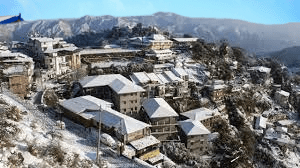
Uttarakhand Foundation Day
Uttarakhand Foundation Day is observed on November 9 every year. Also known as Uttrakhand Divas, it is celebrated to mark the establishment of the 27th state of India. Uttarakhand did not come into existence with India’s independence. It is one of the newer states that was created under the Uttar Pradesh Reorganization Act, 2000. This year in 2023, on 9th November, Thursday we will celebrate the 23rd Uttarakhand Foundation Day.
The state is famous as the Land of the Gods or “Dev Bhumi”. During the time of its foundation, it was named Uttaranchal. It is situated in Northern India and is a great pilgrimage center.
The state was formed on 9 November 2000 by joining several districts from the Northwestern part of Uttar Pradesh and a portion of the Himalayan Mountain range. The state is rich in natural resources including glaciers, rivers, dense forests, and snow-clad mountain peaks. The four most sacred and revered Hindu temples of Badrinath, Kedarnath, Gangotri, and Yamnotri also known as Chota Char-dams are situated here and so, are known as the ‘Land of the Gods. The capital of the state is Dehradun and the High Court is situated in the Nainital.
Foundation Day: Celebrations
Beginning on November 3, the “State Foundation Week” is a unique celebration of Foundation Day that typically lasts for a full week. The event culminates on November 9 with the “Bharat Bharti” celebration, which comes after a number of activities, including “Mera Sainik.” The chief minister of Uttarakhand also discusses various concepts, including plans for the development of the state, and special arrangements are made.
Foundation Day: History
When Uttarakhand Kranti Dal was formed, with the aim of achieving statehood, a widespread movement to achieve statehood swept the region in 90s. It kept on for years. Subsequently, the state was formed, initially as Uttaranchal. The then-president, K. R. Narayanan, approved the bill on August 28, 2000, which later turned into an act. Finally, on January 1, 2007, Uttaranchal was officially renamed Uttarakhand.
The name is derived from the Sanskrit dialect which literally means ‘Northern City’. The state is an amalgamation of culture, ethnicity and religion and is one of the most visited tourist destinations in India. The border states include Tibet, Nepal, Himachal Pradesh, Haryana and Uttar Pradesh.
Festivals of Uttarakhand:
- Phooldei (Flower Solstice): Phuldei is celebrated on the first day of the month of Chait. People put flowers, goods, rice, and coconut in a wooden basket and put them at the main gate of the houses of the villagers and pray for the well-being of the house, and sing.
- Harela: It is celebrated on the first day of the month of Shravan. 10 days before that, 5 or 7 types of seeds are sown in a vessel, and on the day of the festival, the grown-up leaves are cut and offered to the deities.
- Diwali: It is also known as Bagwal. On the night of Diwali, bhaila is played by lighting the light of a fruit peel, and the cow is worshipped and given sweets on this day.
- Basant Panchami: It is usually the Hindu month of Magh or January. During this auspicious occasion, people worship Goddess Saraswati with great reverence.
- Holi: This festival of colors is celebrated for two days in Uttarakhand.
- Bikhoti: The equinox Sankranti in Uttarakhand is known as Bikhoti which is celebrated on the first day of the month of Baisakh.
- Ghee Sankranti (Ogalia): Ghee sankranti falls in the middle of September. On this day, ghee is applied to the head.
- Vat Savitri: People fast for Vat Savitri on the Amavasya of Krishna. This fast is observed by married women who pray for the long life of their husbands.
- Makar Sankranti (Ghughutia): Makar Sankranti is celebrated on the first day of the month of Magh. On this day, flour, semolina, coconut, and dry fruits are mixed and made into ghuggis and fed to a black crow.
- Bhitali: This festival of Uttarakhand is celebrated in the month of Chaitra as per the Hindu calendar. It falls on the very first day of Shravan and is celebrated with great fanfare all over the state.
- Khatoduwa: The festival is celebrated on the first day of the month of Ashwin in the Kumaon region. It is mainly celebrated for animals.
- Raksha Bandhan: Raksha Bandhan in Uttarakhand is also known as Janyo-Punya, which is celebrated on the full moon of the month of Shravan. It symbolizes the bond of brothers and sisters.
- Chaintol: The festival is mainly celebrated in the month of Chait in the Pithoragarh district.
- Jagda: This festival is associated with the deity Mahasu.
- Ganga Dussehra: This festival is scheduled to be celebrated in May/June as per the Shukla Dashmi or English calendar. It is celebrated in the month of June. The holy River Ganga is worshipped on this special day.
- Bhirauli: The festival is celebrated for the welfare of children.
History of Uttarakhand
Uttarakhand’s history is long and consists of the glorious past of the territory. It highlights the great emperors including the Kushanas, Kudinas, Kanishka, Samudragupta, Kataria, Palas, Chandras, and Pawaras. In various Hindu scriptures, reference to Uttarakhand also exists. Through the history of Garhwal and Kumaon, the history of Uttarakhand can be better understood. The state is the amalgamation of culture, ethnicity, and religion.
Uttarakhand is separated from Uttar Pradesh on 9 November 2000 as the 27th state of India. At that time it was known as Uttaranchal. The bordering states of Uttarakhand are Tibet, Nepal, Himachal Pradesh, Haryana, and Uttar Pradesh. The meaning of Uttarakhand has been extracted from the Sanskrit dialect which means ‘northern city. In 2007, officially, it was renamed Uttarakhand from Uttaranchal.
Important Facts About Uttarakhand
Uttarakhand also known as Uttaranchal is a state in northern India. It is often referred to as the “Devbhumi” (Land of the Gods) due to its religious significance and numerous Hindu temples and pilgrimage centres found throughout the state.

It borders the Tibet Autonomous Region of China to the north; the Sudurpashchim Province of Nepal to the east; the Indian states of Uttar Pradesh to the south and Himachal Pradesh to the west and north-west.
The state is divided into two divisions, Garhwal and Kumaon, with a total of 13 districts.
The winter capital of Uttarakhand is Dehradun, the largest city of the state, which is a rail head. Gairsain, a town in Chamoli district, is the summer capital of Uttarakhand declared on 5 March 2020.
The natives of the state are generally called Uttarakhandi, or more specifically either Garhwali or Kumaoni by their region of origin.
According to the 2011 Census of India, Uttarakhand has a population of 10,086,292, making it the 20th most populous state in India.
Uttarakhand’s name is derived from the Sanskrit words uttara meaning ‘north’, and khaṇḍa meaning ‘land’, altogether simply meaning ‘Northern Land‘.
Uttarakhand has a total area of 53,566 km2 (20,682 sq mi),of which 86% is mountainous and 65% is covered by forest making it the 19th largest state in India by area.
Most of the northern part of the state is covered by high Himalayan peaks and glaciers.
With the elevation of 7,816 metres (25,643 ft) above sea level, Nanda Devi is the highest mountain in Uttarakhand and the second-highest mountain in India, following Kangchenjunga in Sikkim.
Two of the most important rivers in Hinduism originate in the glaciers of Uttarakhand, the Ganges at Gangotri and the Yamuna at Yamunotri.
Both Gangotri and Yamunotri along with Badrinath and Kedarnath form the Chota Char Dham, a holy pilgrimage for the Hindus.
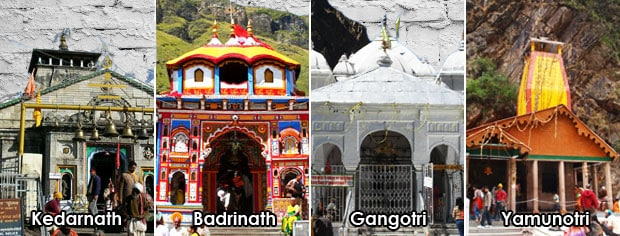
National parks in Uttarakhand include the Jim Corbett National Park (the oldest national park of India) in Nainital and Pauri Garhwal District, and Valley of Flowers National Park & Nanda Devi National Park in Chamoli District, which together are a UNESCO World Heritage Site.
69.77% of the population live in rural areas.
The population density of the state is 189 people per square kilometre
The gender ratio is 963 females per 1000 males
The official language of Uttarakhand is Hindi
The classical language Sanskrit has been declared a second official language.
According to the 2011 census, Haridwar, Dehradun, and Udham Singh Nagar are the most populous districts, each of them having a population of over one million.
The primary food of Uttarakhand is vegetables with wheat being a staple, although non-vegetarian food is also served..
One of the major Hindu pilgrimages, Haridwar Kumbh Mela, takes place in Uttarakhand. The Kumbh Mela at Haridwar is a mela held every 12 years at Haridwar, India. The exact date is determined according to Hindu astrology: the Mela is held when Jupiter is in Aquarius and the Sun enters Aries. The last Haridwar Kumbh Mela had happened from 1 April to 30 April in the year 2021 amidst the COVID-19 pandemic
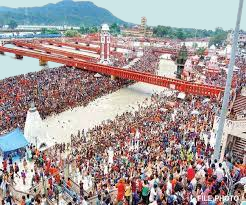
Like most of India, agriculture is one of the most significant sectors of the economy of Uttarakhand. Basmati rice, wheat, soybeans, groundnuts, coarse cereals, pulses, and oil seeds are the most widely grown crops.
Fruits like apples, oranges, pears, peaches, lychees, and plums are widely grown and important to the large food processing industry
Uttarakhand has 2,683 km (1,667 mi) of roads, of which 1,328 km (825 mi) are national highways and 1,543 km (959 mi) are state highways.
Jolly Grant Airport in Dehradun, is the busiest airport in the state with six daily flights to Delhi Airport.
There are 44 nationally protected monuments in the state
Oak Grove School in Mussorie in the state is on the tentative list for World Heritage Sites.
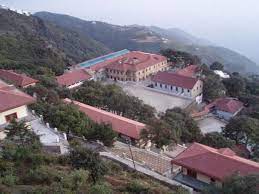
Auli and Munsiari are well-known skiing resorts in the state
The state has 12 National Parks and Wildlife Sanctuaries, which cover 13.8 per cent of the total area of the state.
The oldest national park on the Indian sub-continent, Jim Corbett National Park, is a major tourist attraction. Jim Corbett National Park of Nainital district is the oldest national park in India which was established in 1936 for the protection of the Royal Bengal Tiger. The park is situated at the foothills of the Himalayas in the Nainital district of Uttarakhand.
Vasudhara Falls, near Badrinath is a waterfall with a height of 122 metres (400 ft).
New Tehri city has Tehri Dam, with a height of 260.5 metres (855 ft) is the tallest dam in India. It is currently ranked No 10 on the List of Tallest Dams in the world.
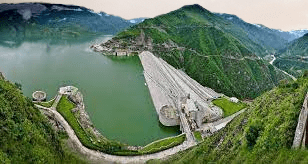
Tehri Lake with a surface area of 52 km2 (20 sq mi), is the biggest lake in the state of Uttarakhand
At the 2011 census the literacy rate of the state was 78.82% with 87.4% literacy for males and 70% literacy for females.
Rajiv Gandhi International Cricket Stadium in Dehradun is the home ground of Uttarakhand cricket team.
Emblem of Uttarakhand
State Song: Uttarakhand Devbhumi Matribhumi (“Uttarakhand, Land of the Gods, O Motherland!”)
State Bird: Himalayan monal
State Fish: Golden Mahseer
State Flower: Brahma Kamal(White Lotus)
Uttarakhand is home to the white lotus which is also the state flower. It is famous for the medicinal values that it holds. And mythologically. Its importance is that it is the same flower that Lord Brahma has in his hands.
State Mammal: Alpine musk deer
State Tree: Burans
The Valley of flowers in Uttarakhand is one of the most popular tourist destinations in India. The valley, which is also a UNESCO World Heritage Site, is located in the Garhwal region in the state and is famous for its thousands of varieties of flowers, medicinal plants, and more
The first Agriculture University of India “Govind Ballabh Pant University” which paved the way for the Green Revolution of India was established in 1960 in Pantnagar. Its original name was Uttar Pradesh Agricultural University. It was renamed after Pant in 1997 in memory of Ballabh Pant, one of the most celebrated farmers of India.
One of the holiest shrines of the Hindu religion, the Kedarnath temple is a revered temple as per Hindu beliefs. It is revered as one of the 12 Jyotirlingas of Lord Shiva. The temple is also considered to be one of the holiest pilgrimage destinations for Hindus. The temple is in the Garhwal region of Uttarakhand.
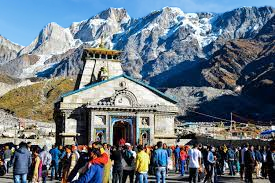
Lakshman jhoola is famous as it is said that the bridge is constructed on the place where lord Lakshman crossed the Ganga river with the help of jute ropes.

The Bharat Mata Mandir in haridwar. It is a temple with many storeys and each storey is devoted to a different group of people who have contributed to India’s History.
The Champawat tiger, which has taken 436 human lives, holds the Guinness world record for the maximum number of deaths by a tiger.
Hemkund sahib is one of the most revered shrines of the state and is particularly known for the annual Hemkund Sahib Fair, which is a major festival and congregation of the Sikh community in Uttarakhand. The shrine is also home to the only Sikh temple in the state, which has a rich history and plays a major role in the religious, social, and political life of the state.
